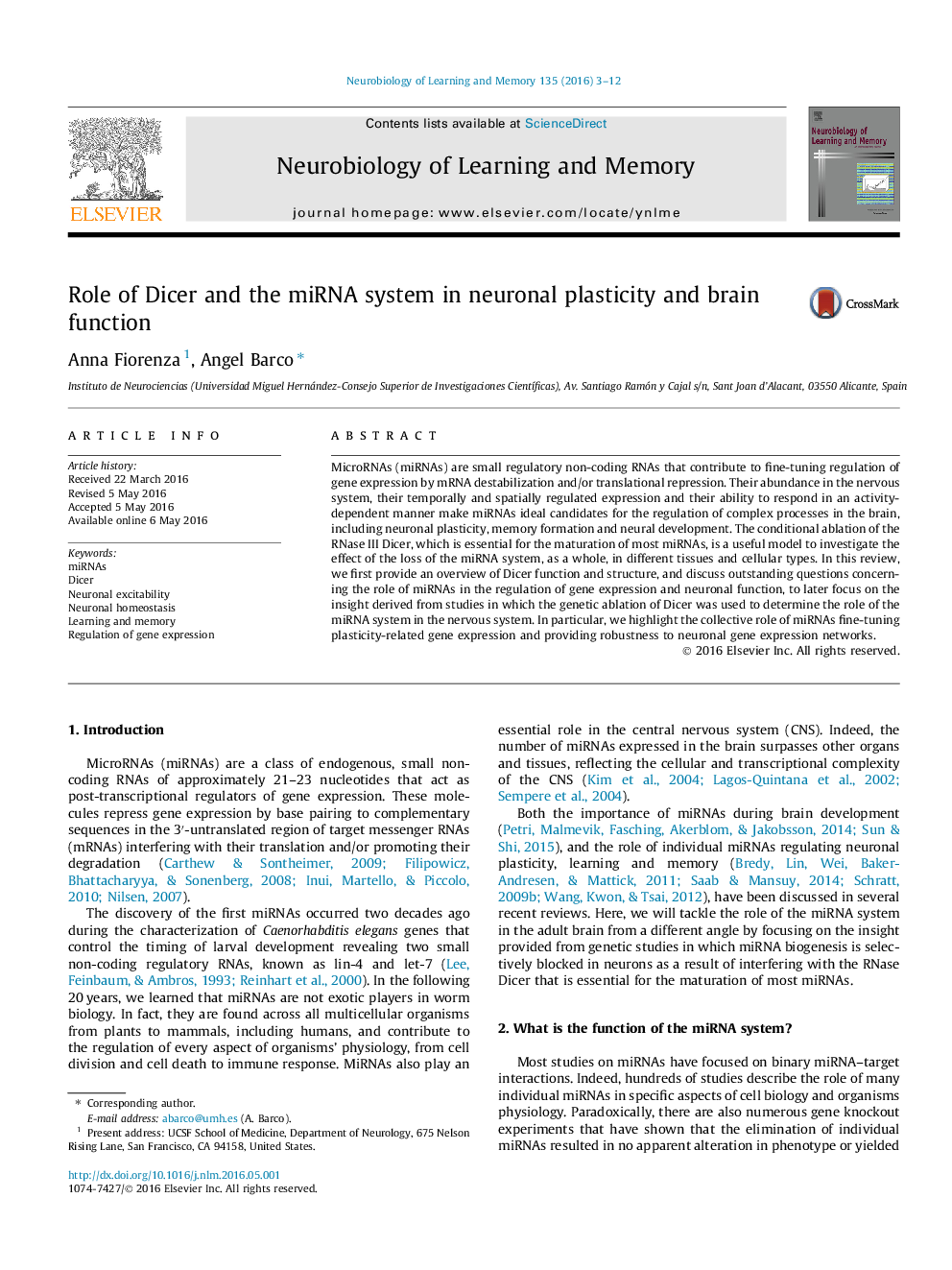| Article ID | Journal | Published Year | Pages | File Type |
|---|---|---|---|---|
| 5043347 | Neurobiology of Learning and Memory | 2016 | 10 Pages |
â¢Individually, miRNAs negatively regulate the expression of specific target mRNAs.â¢Collectively, the miRNA system may prevent fluctuations in mRNA and protein levels.â¢This buffering ability confers both stability and flexibility to neuronal responses.â¢Dicer has a critical role in miRNA biogenesis.â¢Dicer cKOs reveal role of the miRNA system in specific brain regions and cell types.
MicroRNAs (miRNAs) are small regulatory non-coding RNAs that contribute to fine-tuning regulation of gene expression by mRNA destabilization and/or translational repression. Their abundance in the nervous system, their temporally and spatially regulated expression and their ability to respond in an activity-dependent manner make miRNAs ideal candidates for the regulation of complex processes in the brain, including neuronal plasticity, memory formation and neural development. The conditional ablation of the RNase III Dicer, which is essential for the maturation of most miRNAs, is a useful model to investigate the effect of the loss of the miRNA system, as a whole, in different tissues and cellular types. In this review, we first provide an overview of Dicer function and structure, and discuss outstanding questions concerning the role of miRNAs in the regulation of gene expression and neuronal function, to later focus on the insight derived from studies in which the genetic ablation of Dicer was used to determine the role of the miRNA system in the nervous system. In particular, we highlight the collective role of miRNAs fine-tuning plasticity-related gene expression and providing robustness to neuronal gene expression networks.
